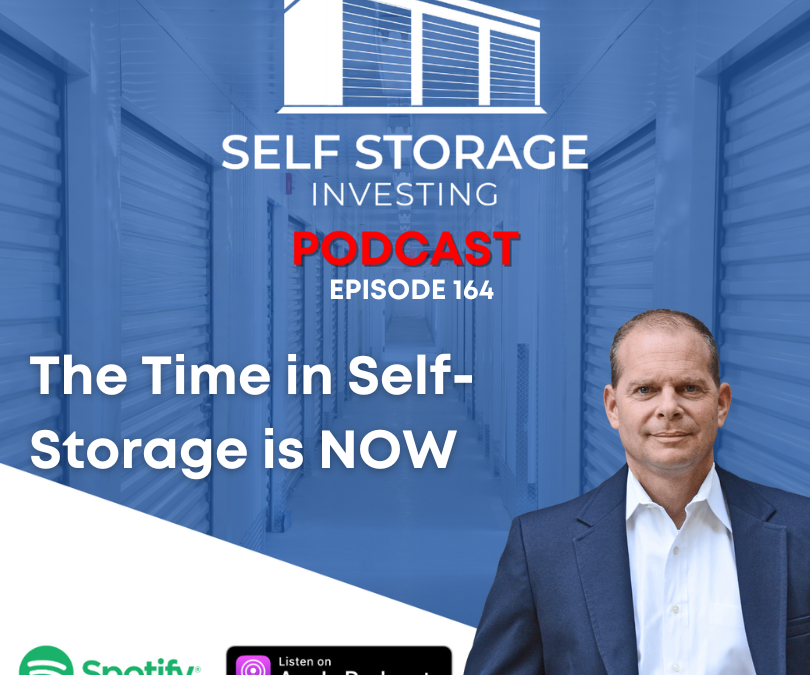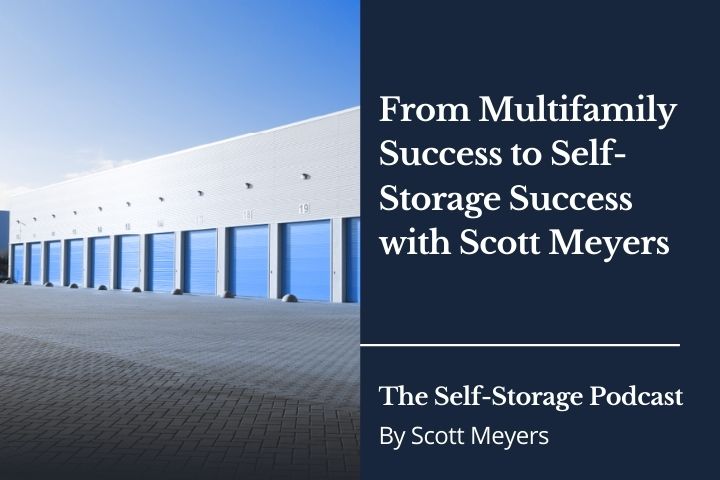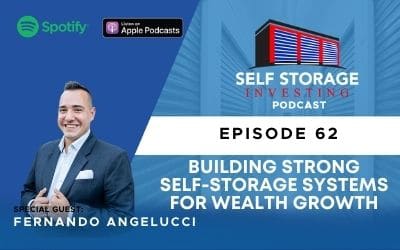The revisions to the SBA rules make it easier for borrowers to meet the 10% equity requirement for loans, allowing seller debt to count towards the full 10% equity injection.
Other changes include the acceptance of Home Equity Line of Credit (HELOC) or cash-out refinance of real property as equity, and the simplification of debt refinance.
And a newly implemented rule limits loan terms for partner buyouts to 10 years.
WHAT TO LISTEN FOR
5:18 Use of HELOC and Cash-out Refinance for Equity
6:30 Clarification of SBA 7(a) vs. 504 Loans
17:40 SBA’s New 10-year Loan Term Limit
26:21 REITs Management Approval
Leave a positive rating for this podcast with one click
CONNECT WITH GUEST ANNE MINO
Website | LinkedIn | Email
CONNECT WITH US
Website | You Tube | Facebook | X | LinkedIn | Instagram
In this episode Scott discusses the current opportunities in the self-storage market.
It’s important to act now rather than sitting on the sidelines, as the market is transitioning and offering many opportunities for buying, selling, and developing.
Scott also highlights the importance of mastering underwriting and market analysis skills, building a team, executing swiftly, getting educated and finding a mentor, and giving back.
Pay attention to macroeconomics, choose a focus and follow it until success, and consider partnering or investing.
WHAT TO LISTEN FOR
1:09 The Resilience and Growth Potential of Self-Storage
3:30 Ownership Landscape and Opportunities for Individual Investors
17:40 The Importance of Underwriting and Market Analysis
26:58 Strategies for Growth and Scaling
Leave a positive rating for this podcast with one click
CONNECT WITH US
Website | You Tube | Facebook | X | LinkedIn | Instagram
Follow so you never miss a NEW episode! Leave us an honest rating and review on Apple or Spotify.
Episode Transcript
Scott Meyers (00:01):
Anytime that there is a transition in the marketplace, which we’re heading into right now, there’s many opportunities right now. There’s many opportunities in the marketplace, whether you look to sell and take advantage of the opportunities in the marketplace right now to buy at this time or to develop at one of the more opportune times, even if the capital stack is a little more expensive. We’re going to dive into the reasons why it is important to act now instead of sitting on the sidelines.
Announcer (00:33):
This is the Self-Storage Podcast where we share the knowledge and skills from the industry’s leading investors, developers, and operators to help you launch and grow your self-storage business. Your host, Scott Meyers, over the past 18 years has acquired, developed, converted and syndicated nearly 5 million square feet of self-storage nationwide with the help of his incredible team at selfstorageinvesting.com, who has helped thousands of people achieve greatness in self-storage.
Scott Meyers (01:09):
Hello everyone, and welcome back to the Self-Storage Podcast. I’m your host at Scott Meyers, and today what I thought we would do is this is going to be a solo podcast and we’re going to do a deep dive on the opportunity that is still in the self storage industry. And I say still with an emphasis because it is a little surprising to me, but we do have so many people that call in that email us that are at our live events. Many folks that are reaching out to us for consulting that are saying, is there still an opportunity? Is there still a huge opportunity in self storage and have I missed the boat? And where are we in the market cycle and where are we in the overall life cycle of self storage? In other words, have I missed the boat? That’s ultimately what people want to know.
(01:51):
And so I’m going to do my best to, and so what I’m going to do is I’m going to break down in a little more detail where we are in the life cycle and why now is absolutely the best time to be investing in self storage. And I don’t always say that. I don’t say that in every single economic cycle that we’re in, but truly, if you talk to many, many folks that have been in the industry for a number of years, including myself, their biggest regret is that they didn’t get in sooner and that there’s always an excuse or perhaps a reason that may be holding us back, which is typically in unfound fear because the stats are right in front of us and we’re going to do a deep dive into those. So some say, Hey, the bull run is now ending, and the pandemic inspired a boom that we saw in self-storage where when people were sent home from work and school, it created a huge demand for self-storage.
(02:40):
Is that now that that is over and that we’ve gotten beyond that, that self-storage has come back down to, well, the level that it was before, or do we just miss the boat altogether? Well, so the questions all surrounding that is, is there a limit to America’s self-storage addiction? Are we overbuilt or oversupplied or as people would like to say, oversaturated in this industry? Has the bull run ended when the interest rates started going up and all of real estate started to tank and the pandemic inspired boom that we saw in self storage when everybody came home from work and school and everybody had to clear out spaces in their homes for people to do work and to do school to cause a huge demand in self-storage? Well, now that we’ve kind of normalized, is it over for self-storage? Well, what we’ve seen is that self-storage has really been kind of the wild, wild west in terms of commercial real estate.
(03:30):
In other words, at least those are my terms in the way I look at it and not just because it’s willy nil year, people are just out running amuck and investing in this industry class that is still in an infancy stage or maybe not in a mature stage, but really to the place that self storage is maturing in its lifecycle. However, if you look at the asset class compared to other real estate asset classes, especially commercial, we see that most of the other asset classes, meaning assisted living, mobile homes, multifamily medical office buildings, hospitality, retail, generally speaking, those industries or those asset classes we see are 80% owned by the REITs, the real estate Investment trust or larger national players or regional players. And the other 20% is owned by mom and pops or independents, whereas self storage is literally the opposite of that. We are still an industry that is 80% owned by the mom and pops or the smaller owner operators, and I’m going to break that down here in a moment to give you some more percentages of that. But by and large, this is the asset class where still there is more opportunity for the individual investor, owner, operator, entrepreneur to get into this business because it is not dominated by the REITs or the national players. And I know that may be surprising for some folks because when you look around the landscape and you look around at your own community, what you see for the most part are the gleaming shiny class a self storage facilities instead of the mom and pops.
(05:07):
When you look around your community, mostly what you see are these Class A facilities that are owned by the REITs, the gleaming shiny class, A three story facilities with all the bells and whistles located in the best parts of town that are multimillions of dollars to be able to build and then operate very sophisticated with every imaginal piece of technology in it. And it may seem unattainable for the individual investors. So where are all the single story self storage facilities that I can buy, that I can purchase with a smaller down payment and maybe taking out a loan on my individual residents or are using some of my 401k to be able to purchase a facility? Where are those? Well, they’re behind those class A facilities and they’re on the outskirts of town. They’re in the suburbs, but they’re out there. So no matter what your strategy is, it seems as if the industry as it matures is going head in the same direction as the other asset classes in this.
(06:03):
So regardless of whether you want to buy one facility and hold it forever and then sell it or maybe pass it on to your kids, or maybe you say you want to own a handful of them, or maybe the goal is to purchase, acquire as many as possible by syndicating and bringing in private equity and you want to grow a portfolio of 10, 15, 20, 30 facilities and then sell it off to a REIT to the larger players. Well now you’re participating in the consolidation race. And that’s what we’re seeing in the industry right now and that is the larger piece of what is happening at this time and is the goal of many folks out there because we’ve seen that if you buy a facility and you turn around an existing facility that was, say, owned by an unsophisticated mom and pop owner, they didn’t have the technology in place to run it as efficiently as possible and reduce the expenses and let some of the technology do the heavy lifting.
(06:50):
They didn’t have a very strong emphasis on marketing, and so people weren’t able to find them. And from an operation standpoint, well, they just never raised rates and they didn’t add on any ancillary income streams. So all of these opportunities to be able to create value in an existing facility, those are the reasons why we as investors and entrepreneurs look to purchase those because we can turn them around and make ’em sing and create value in them, and then we can refinance after we’ve created that value or sell it or just enjoy the increase in cashflow every time we do a little bit of tuning and tweaking to the operations and the overall asset. Either way, no matter what the goal is, if you do it once or if you do that 10, 15, 20 times over, well then you’re rewarded even more if you have a portfolio of facilities that you’re going to sell to a larger operator and or refinance.
(07:37):
Now, if you’re going to sell to many of the larger owner operators, now this isn’t always the case, but typically the REITs and the larger players, they will pay a premium versus what you would get for just selling an individual facility. And here’s why. It’s not because they don’t know what they’re doing and you’re pulling the wool over their eyes. It means that their cost of capital is lower than yours and therefore they’re going to get a greater yield on a facility where multiple facilities and even paying a little bit more than an average individual would if they just went to a traditional lender to get a loan. So it’s all about the yield. It’s all about the spread and the amount of money that they’re going to make versus from the facility on the purchase price using their current cost of capital, the amount of debt that they’re putting onto it and equity and cash into the capital stack to purchase it.
(08:26):
But they have the ability to be able to purchase at a little higher price, which means that you’re going to be able to sell at a little higher price because they can roll this into their portfolio. They have a lower expense load than you because of they’re spreading those expenses across multiple facilities. And if they’re adding your facility into that portfolio, well, the marketing’s already in place, the website is already there. They have regional managers, they have district managers already in place, they have departments that are already in place and they’re just adding one more or 10 more or 15 more facilities that they can absorb very easily without a higher expense. So they’re willing to pay a little bit more. And on top of that, again, their cost of capital, it is a little bit lower so they can still achieve the yields that they need to receive for themselves and their shareholders easier than it is for say an individual or for you and I to be able to buy those going through the traditional route and adding all those expenses in at a per facility level and paying the bank debt that we would normally pay if we just walked into the bank.
(09:29):
So I say all this because this is one of the strategies then within our industry that many folks are striving towards, and that is to be able to provide a portfolio as an exit to the larger players. And then that’s when, say you an individual investor can well sail off into the sunset so to speak, or rinse and repeat and do it all over again. What does the landscape look like right now and can we actually do this? Well, the REITs, not only did they outperform all other asset classes, the self storage REITs performed all other REITs in all their asset classes as they have for the past several years, somewhere to the tune of about 50%. But now 31.2% of self storage space is owned by six public companies. 16.5% is owned by the next 94 operators, and then 52.3% is owned by the smaller operators or the risk the bunch.
(10:23):
And of course, depending upon the time that you listen to this and that podcast, that will have changed at least by a little bit. And the reason why we became so popular and why these numbers began to skew very quickly is because many other folks, the traditional REITs that have been in self storage for a number of years, the usual players that you see out on the street, they were doubling down. But then we also saw that many other hedge funds, many other private equity partners and other REITs that were just in other forms of real estate now begin to enter our space. They saw the effects of COVID-19 on their asset class compared to self storage where we actually went up into the right in terms of a performance and did extremely well. Self storage is an essential business, which means that it never shut down during the pandemic whereas many other businesses did.
(11:13):
And so we saw a lot of money that it was pouring into self storage, and so it opened everyone’s eyes and investors began to flocking to the asset class in droves. And we also saw a couple of high profile purchases during this time, Blackstone, the biggest folks on the block, well, they bought simply self storage for $1.2 billion. And then that we saw that public storage acquired Easy storage for $1.8 billion, and then CubeSmart completes their acquisition of Storage West Portfolio for 1.7 billion, and then they continued to with their buying Spree CubeSmart that is, and they acquired an eight facility storage at Deluxe portfolio for $540 million. And then life storage acquired at 23 property metro self storage portfolio for $369 million and on and on and on. So all of a sudden everybody was taking a look at, Hey, what’s going on with self storage over here? And then throwing another couple of larger players, Warren Buffett with Berkshire Hathaway gets in and begins to partner with Storage Mart and then Bill Gates, it gets into the operation as well.
(12:20):
And as you can see, now all of a sudden sell storage if it hadn’t already, it made its way into Main Street. And so what this did is then the owners and operators of self storage are recognizing that they could sell self storage for a little higher price, which mean a lower cap rate. And so we saw a fair amount of cap rate compression going on during that time. So in 2015, we saw the average cap rate and evaluation for self storage at somewhere around 5.45%, whereas at the height of the pandemic in the 2021, we saw the average cap rate at right around 4.02% in a self-storage. And yes, that is an interest rate sensitive, but if you just begin to look at a self-storage facility that says for Easy map a $100,000 net operating income, well in 2015 selling at a 5.45% cap rate, the evaluation would’ve been a $1,834,862.
(13:20):
However, in 2021, it would’ve sold for 2,487,562, that same facility with a hundred thousand dollars net earning income. But just because of the cap rate compression, because of the popularity about self storage and how well it was performing well, that seller would’ve received an extra $652,700 just in selling at a later time when all eyeballs were on self storage because at the once again is outperforming all the other asset classes. So what we saw during that time is that the consumer price index hit 7%. We saw inflation going up. And so now there was a greater interest in self-storage because once again, the yield was here. So then what we saw during that time is the producer price index hits at 15% because 40% of all the dollars in the US was printed in the lasted 12 months during that time, and the value of the dollar was reduced by 30%.
(14:12):
So investors needed to find yield and they needed to find it at that time. And so we’ve seen once again, this is where it was created was in self storage because it is so recession net resistant and during the pandemic, it acted like a little mini recession at that time. So we saw 6.7% month over month rent growth in self storage, and the average cap rate spread over a 10 year treasury for storage was right around a 3.93% versus only 1.86% for multifamily. So private equity started plowing money into self storage and they haven’t stopped. It began with the Heinz Fund. They launched a $1 billion fund to invest in undervalued properties, including self storage and a number of others. New entrants into the marketplace have began chasing self storage for yield and they haven’t stopped since now today in 2024. So here’s what that means.
(15:06):
Anytime that we have a change in the marketplace as an opportunity to make money when other people are sitting on the sidelines, I tend to take the stance which I have over many years, and it served me well, if I see a pile of money in the corner, I’m going to go pick it up. And that’s what I found anytime that there is a transition. And so if you have facilities that are available and they’re matured and it’s time to sell and you have people chasing it, well then now’s the time to sell. If you’ve depreciated your facility, it may be a good time to be able to jettison that and let it go. You can buy with the debt that’s out in place right now, which means that if you’ve got a higher cost of capital, once interest rates go down and cap rates go down, then you are going to have the market at your back that is creating value for you.
(15:46):
If you can develop right now with the debt that is in place, or if you can develop with the debt that’s out there in place right now and purchase for a lower price, some of these abandoned development projects that didn’t pencil out for the current owner, the previous owner or these conversion opportunities, but with your cost of capital, they do pencil out and you could pick them up for a smaller price, a lower price and finish them out, well, you’re going to be in better shape once again when the market comes back and then the interest rates go down and therefore the cap rates go down. Or if you could tap into the private equity river of money that is flowing into self-storage to come alongside of you and you have a knack refining these deals that is going to serve you well. And of course, depending upon where you’re at in terms of your experience in the industry and what you bring to the table, joint ventures, partnerships, this is the time when those are made which benefit.
(16:33):
Many folks going forward into the future or deploy all of the above strategies or the opportunity could just be lost because you’re going to ignore all of this at your own peril. So anytime that there is a transition in the marketplace, which we’re heading into right now, there’s many opportunities right now. There’s many opportunities in the marketplace. So whether you look to sell and take advantage of the opportunities in the marketplace right now to buy at this time or to develop at one of the more opportune times, even if the capital stack is a little more expensive, we’re going to dive into the reasons why it is important to act now instead of sitting on the sidelines. Okay, so that brings me back to selling. What does it look like if you want to sell right now? Well, first of all, if you’re not very strong at underwriting, in other words, even when you purchase your facility or developed, you may not have had a sound financial sense to this project, but you just knew or you listened to the consultants or the appraisers or the brokers, well, you need to master underwriting right now so that you can not only accurately put a value on your facility, but so that you can also defend that when it comes time for the buyers or a broker to tell you otherwise.
(17:40):
In terms of the value of your own facility, you also need to, if you haven’t already, you need to begin maximizing the net operating income. Now, if you’re looking to sell in the future, if you’re poised right now as interest rates are starting to come down, well remember the buyers are looking back at the trailing 12 months of net operating income. And so you need to, when is the time to start maximizing the NOI? Well, it’s the minute you buy a facility, but if you’re really going to prepare to sell, you need to work as hard as possible to drive down every last expense in your facility and drive every line item when it comes to the income sources coming into the facility because again, people are going to be looking back 12 months. And so creating value now to be able to sell next month is not going to reward you.
(18:24):
I would get a broker’s opinion of value right now, and if you have a couple of brokers that you’ve worked with in the past, they will spend a little bit of time and give you an idea as to where they would take this to market in terms of pricing to see if it even makes sense for you to do this now, and they give you some hints and pointers on what you need to do to be able to maximize the value, which are the things that I just mentioned. Does it make sense to roll this up with other facilities in your portfolio? Because if you had the ability to sell 2, 3, 4, 5 facilities, that is going to be much more attractive and you’re going to get a better valuation and better price from a reit, a larger player that it would rather stroke a check once and do less due diligence and be able to take a portfolio to be able to buy a portfolio and roll it into their portfolio because it’s just less time for them and they’re willing to pay a premium for that.
(19:15):
Now, considerations if it is time to sell or maybe time to sell. Do you have any loan prepayment penalties right now that you need to understand exactly what those are or have you already bought all those down because you’ve held it for a while and now that is a non-issue? If you have investors that have come alongside of you, so private equity partners doesn’t make sense to sell right now, have you created enough value and are you giving them the return that they looked for in terms of an internal rate of return or an average annual return? Huge implication for those of us raising private equity to make sure that we’ve hit our marks and got the returns back to our investor. Any tax implications for selling right now that you need to consider? Have you depreciated it? Have you already taken a cost egg study and taken that depreciation and now you’re going to have to repay that back at that closing because it is a shorter timeframe?
(20:01):
Also, something to look into with regards to your tax advisors and do you have the ability to, do you have a healthy and a robust enough pipeline or funnel of facilities that you can do a tax deferred exchange if this is a property that you’re just taking forward on your own? Because remember, if you sell at the top of the market, you’re also buying at the top of the market as well. So you need to understand what you’re going to replace that with if you’re buying right now. So strategy number two, if you’re looking to buy right now and you’ve ramp things up because you do recognize the opportunity, well number, the first thing you need to do is no different than selling is you need to master underwriting to understand just exactly what you’re buying and getting at. You’re paying the correct price and you’re not overpaying for a facility and taking into consideration the and the facility and where you plan to take it, I would also, if you’re going to really ramp up your acquisition efforts, I would recommend having a financial analyst at the ready, somebody who could at least do the first round or the first passive of underwriting if you’re going to be feeding them deals.
(21:03):
It does, it’s an exercise of data entry and inputting the income and the expenses, the p and ls, all the information on a facility to get to the place where you can underwrite it. And so instead of just waiting for the time or finding the time to be able to underwrite these facilities, I would employ someone or go out and contract somebody. And yes, when I say virtual assistants, I mean a virtual assistant means somebody who’s not employed with you on staff that is in your office, but an analyst, a financial analyst that can underwrite these for you, that is a virtual assistant that you pay on an as deal basis to be able to do the first pass of underwriting on your facilities and giving them some benchmarks or some KPIs to say, Hey, this is what we keep, this is what we’re looking for, and if this variable is too far off or if this doesn’t pencil out to this level, then just pass because speed is going to be the key in the market right now and beating your competition.
(21:54):
So while they may be underwriting a little bit faster than you, and if you’re waiting around to get to it until you have time to get to it, well then you may have just missed the boat. I would also go out, seek out wholesalers, and many times they may be emailing you that you may know of them that these are folks that have gotten really good at finding these opportunities and underwriting them and then putting ’em in front of potential buyers like yourself. And these are going to be key people to be part of your acquisition team without being part of your acquisition team. So they’re third party, they’re outside. These are folks that take a fee for presenting these deals to you. Don’t forget to reach out to the brokers your broker network, let them know that you are in the market for facilities.
(22:35):
Give them your acquisition criteria, your buy box, and then follow up with them on a regular basis reminding them that you are clamoring for deals and that you have the ability to close on these deals as well. So the third area to focus on and to double down in right now is the development side of the house, and that also I would include conversions in that. So buying existing billings and converting ’em to self storage. So the first step is, well, no different than the other two, is to master your underwriting, especially when it comes to the development side of the business. Now we’ve seen a lot of facilities under construction and still planned and heading into 2024. However, we also are still sitting at a place where we’re approximately, depending upon what statistic you look at, 95 to 96% occupancy in our industry right now across the country.
(23:23):
Obviously that’s a moving target and that is one number that we pulled down. But we keep an eye on the industry, especially at the market level when we are looking to do any conversion project or any development. But now is the time again to be looking at, I would begin looking at we are in this unique place right now. So the first place to start is up with the consultants in the industry. They’ve done a number of feasibility studies for developers where the project never got off the ground because the capital stack didn’t pencil out. The cost of capital was too high as interest rates went up or they got a little too far down the road, they ran out of money. And there are a number of conversion projects and development projects out there that if you begin looking under rocks, you will find them.
(24:01):
There’s also a lot of dirt out there that people are looking to sell that they’ve had out there for a little while. It is zoned for self storage or could be a permitted use and a variance and depending upon what people’s situation is because as we head into a more rough economic time, that’s when people begin to sell things because they have to and now is the best time. If you find things that are for sale that typically you’ll see that the people understand that they’re selling at a time where it may be not as advantageous for them, but they have to sell. So you know that many of the projects out there that are for sale right now are out there for a reason than the people typically have to sell right now. They’re not going to wait until they get a higher valuation when interest rates come down in a year from now.
(24:38):
So now is the time to be looking at any and all projects because you just may find that there’s some don’t wanters out there that absolutely have to get rid of things. And so we could do a deeper dive into all things development and conversions. But the main thing that I want to point to, because it is very complex and there’s a lot of moving pieces to it, but at the end of the day now is the time to be looking at these projects. And that’s what I want to impress upon you. We still do no matter what we’re looking at in terms of acquisitions or developments and conversions, we’re looking at the underwriting on each of these. However, the underwriting model for our acquisitions and our development, it doesn’t change. We don’t change just because interest rates are now at 8% when they used to be at four.
(25:20):
The model doesn’t change. Our model is the same. Our cost of capital, our inputs are a little different when it comes to our capital stack and how much we have to pay for our money to be able to utilize. However, nothing should change in terms of the model and we continue to build in our buffers. We continue to build in our profit and our yield. So from that standpoint, nothing has changed. So when people say things don’t pencil out, well, if they don’t at the higher cost of capital, then you don’t buy it. But when they do, because you find these deals that people are selling because they have to, and they’re also coming in line with a market because they understand the cap rates are now higher because the cost of capital interest rates are higher, now is still the time to buy because again, we can make modest improvements in the facility, in existing facility, but we’re also going to get to the wind in our back once again of a market in which the interest rates are going down and therefore the cap rates are going down.
(26:10):
And so that is why we are so bullish and still extremely, even more so active right now looking for opportunities in this marketplace because we know that anything we do to create value in the facility right now is just going to be magnified once the interest rates and the cap rates come down in the future years. So we also talked about partnering and doing joint ventures is another avenue. And so this crosses all aspects, whether you’re looking to buy, develop a convert, you also need to master underwriting. You need to know what you bring to the table so you can begin to construct the operating agreement and the splits, the roles and the responsibilities, and then the commensurate splits in profits and cashflow as you go forward. There’s an old African proverb that says, and you’ve probably heard it from us, and we stayed around here a lot, if you want to go fast go alone or if you want to go far, you go together.
(26:58):
And we found by partnering up, by creating joint ventures with folks that bring their development prowess to the table, and sometimes they bring a development to the table and we can layer around our abilities to raise private equity, our ownership of procedures and our business processes on the backend, and perhaps we partner with other management companies. That is what they bring to the table, which is their superpower. Regardless what that looks like, it’s important to know upfront, well, what does somebody else bring to the table? What do you bring to the table? And then how do we create a partnership that is a win-win because we have complimentary skill sets because we have complimentary superpowers that we bring to the deal, or do we have passive investors? They’re coming along and they provide the equity and or their balance sheet, which allows you to be able to grow because you could find the deals and you know where to acquire the facilities and where to develop the facilities, and all you need is a fuel for the engine.
(27:51):
But I would also recommend bringing them in as limited partners. Those are folks that you continue to call the shots, but they’re coming into this project in a limited fashion, meaning from a responsibility and a decision-making aspect. You still call the shots, but they get a piece of the deal because they bring the fuel to the project, or are you looking for, you’re on the opposite end of that and you’re looking for a strategic partner that brings in the capital to improve a project and they become the general partner and you take a more passive role as just the deal finder or perhaps your expertise is on the operation side and that’s what you bring to the table. Either way, there’s a hundred ways from Sunday to create a partnership and a joint venture. It’s just understanding what it is that you bring to the table and what you’re willing to either give up or what you’re willing to take if somebody’s bringing you into a deal as you go forward, you can start a fund or you can create a joint venture fund, which is just what we’ve done.
(28:42):
We just started and launched a $25 million acquisition fund. We launched a $15 million conversion fund where we’re focusing on the conversion of existing and vacant dark big boxes, warehouses, grocery stores, and we’re getting ready to launch another fund by the third to fourth quarter of this year as well. So where to start? If you’re looking to raise capital and you’re looking to create a fund or come in on that side and looking for joint ventures, well, you begin to brand yourself that way and you begin to talk the talk LinkedIn also updating your bio and your company profile and what it is that you’re looking to achieve and then reaching out to other like-minded folks or the folks that have those complimentary skill sets in storage on LinkedIn that you could partner with because you have a project or you have some dirt or you have this expertise that you’re looking to bring to the table when other folks are looking for exactly what it is that you provide.
(29:33):
And then also doing the same things that we do, which is this a podcast. We are stating what it is that we do, what we’re looking for, how we can help people in the marketplace. That includes not only our education company, but our investing company. We bring private capital to the table. We have the ability to raise money, we do have strong balance sheets and experience, and we have a team of folks that have skill sets that cover the gamut, which allows us to very easily create partnerships and joint ventures that work because of our complimentary skill sets because we basically do it all. So we touched on the three ways, the three main food groups if you will, or the approaches to this market. But now let’s talk about the actual, but now let’s talk about the actionable items, the things that you need to do to be able to execute.
(30:17):
So let’s call it the eight to be great in 2024. One, you need to pay attention to the macroeconomics. You need to understand exactly what’s happening in the marketplace and how interest rates are going to affect the economy and keeping an eye out for some of the other underlying dynamics. We follow three economists that cover not only self storage, but also cover the economy in general, but with a specific bent towards real estate and how we’re affected. So pick your favorites, follow them and lean in so that you can see a little further down the road, especially when you’re not always paying attention to it. Two, you need to master your underwriting skills. We touched on that three times and this is the fourth. If you don’t understand the numbers or basically the game board, then you don’t understand who’s winning the game. Number three is master your market analysis skills.
(31:01):
So it’s one thing to be able to understand the underwriting above facility and the valuation of it and how it’s affected, but if you plan to take this facility from 60% occupancy to 90 and raise the rates in the market from 80 cents per square foot to a dollar 20, well will the market support that? Well, you don’t know until you dig in. If the market within your facility that you’re looking to buy or build within five miles your trade area, all the other facilities are at 60% occupancy, well then guess what? You, you’re stabilized as 60%. You won’t be able to take it to 90. And if everybody’s at 80 cents per square foot, that means that there’s a lot of competition and you’re not going to be able to get it up to a buck 20. So you need to understand how to evaluate your market.
(31:42):
Number four, you need to build your team and you need to join a community of folks. So we have built the largest ecosystem and the largest community in a self storage. And so if you’re not already a part of it, if you’re just listening to the podcast, this is just one piece because we have an army of self storage folks out there that we have trained and taught that have worked with us over the years, quite honestly, the right way to be able to go out, find, evaluate, purchase, and manage self storage facilities. And we have some master marketers that are doing deals with each other because they’re finding these off market deals. They created relationships with the brokers, so they’re getting a first look before anybody else. And if you’re not a part of a community like that, that you’re learning from or working with and partnering with that are feeding you not only information and education but also feeding you deals, I would invite you to at least give ours a look.
(32:27):
I would invite you to at least give ours a test drive because it is the original community and is the largest most active community in this industry. Number five is really just to execute. So land on one of these whether you’re looking to sell and that’s what you plan to do for the next year or two in this transitional market that we find ourselves in or you’re going to buy, develop, partner, invest, pass the year, all of them, make a decision as to what you’re going to do and then move towards that, get off the dime instead of just sitting back and not doing anything. So what is the focus? Choose that focus. And then as the acronym, one person explained that the acronym for focus is follow one course until success. So whatever that is, pick one and then focus on it. Number six, what we focused on in our organization more than anything else recently is just the speed at which we execute.
(33:17):
You can budget all you want. You can negotiate for an acquisition, you can negotiate for development package from our general contractors and our steel packages, but nothing even comes close to our delays. If you delay personally delay, if you kick the can down the road, you’re procrastinator or if you just don’t operate and execute efficiently and swiftly, you’re going to lose because the prices are going to go up while you’re trying to negotiate for a better price, somebody’s going to eat your lunch and they’re going to find that deal while you’re analyzing too slowly, you have to move fast and you have to move decisively and aggressively in this marketplace right now or you are going to fall behind and ultimately it’s going to cost you more delays. And just going slower has cost us more in lost opportunity and just overall costs and expenses more than anything else.
(34:04):
And so we have amped it up in our organization and everybody is running with a sense of purpose and a sense of urgency. So I suggest you do the same as well. Get educated and get a mentor. Number seven, if you’re new to this industry or even a novice in this industry right now, and maybe you’re shifting into development from buying existing facilities, what you don’t know is always going to come back and bite you. And we’ve seen this over and over again, and that’s why we have an education company. And as a result of having an education company, we’ve seen so many people make so many costly mistakes because they went out and they watched a YouTube video from some guy or gal in the industry who did a couple of successful deals back in the heyday in the past 10 years where they also had a market behind them that was strong and bullish and 50% of their success was based upon that.
(34:55):
You need to get educated from the right folks, from folks that have been in the industry for a number of years that have been through recessions that are welcome to talk and that are active investors, not just a few folks that have done a couple of deals or even bought a couple of deals, they haven’t even gone full cycle, and there’s plenty of them out there. We’ve seen it. We understand that we are in this industry, we are in this space. We’re also in the self storage, investing and education space. And we find that many of our folks on our team, and we have a very large team that is out there looking at the multiple pieces of content and information that’s out there that runs across our desk, and we’re having to go back through and kind of police it, and we’re putting content out there that combats the bad and sometimes illegal information that’s out there.
(35:34):
So not all education in this industry is created equal, and not all information that you find on the internet is a trustworthy and is a true statement. So get educated, get educated properly, and get a mentor. If you don’t pay for mentoring, if you don’t pay for consulting, if you don’t pay for the education, then guess what? The market is going to give you the education. And so again, coming from an organization that was built upon education and a mentoring, meaning myself, that’s I have paid a vast amount of money to make sure that I don’t make mistakes and I crossed my T’s and dot my i’s. So I say this coming from a person who has spent a lot of money on educating himself and also from a person who runs an education company and we have saved up many folks from basically saying no not to get into a deal versus teaching them how to do a deal and then encouraging them and pushing them to go out and just buy anything and everything and they get their hands on, that is not the way to do it.
(36:34):
And so if you find yourself in either one of those positions where you’re a little too timid that you’re unwilling to invest because you don’t know what you don’t know or you’re out there gun slinging and that’s gotten you in trouble in the past few years and you need somebody to kind of reel you back in and tell you how to say no and when to say no because not all deals are created equal, well then get a mentor, get a partner or somebody who has a little more experience or somebody that can show you the ropes. And then number eight, to be great in not only this year but any year just to give back. And I’ll never miss an opportunity to stress how important it is to be able to give back. Our organization, our DNA is built on giving back. We give 10% of our profits away by building houses in Mexico, and we take our staff, we take our partners, we take our students, our associates in the industry, family, friends, anybody who wants to go on a short-term family mission trip with us, we’ll take ’em.
(37:25):
And we build six houses per year. We take two trips a year. We build three houses each time. And as of now, first quarter of 2024, we built over 30 houses and we are going to build another six, perhaps a seven this year as well. And without purpose, I feel striving for an imaginary number that you think is going to make you happy or a certain dollar amount that’s going to either get you out of debt or allow you to quit your job or allow you to retire. That’s elusive and you’re going to continue to move that bar. But if you recognize that you were put on this earth with a purpose and that is to be able to give back some way with the abundance that had been created from the profits, from self storage that you’re going to achieve in the future, then I suggest you take a little bit of time and figure that out.
(38:14):
Lean into that, meditate on it, clear your head, pray about that if that’s the type of person that you are, and see what your God or the universe of brings to you and reveals to you as to your purpose. Because when you get up in the morning and you know what your purpose is and it’s to maybe build another house or more houses like it is for me, then going back to bed and hitting the snooze is not an option because somebody else needs a house. I have a goal in mind. I want to do X, Y, or Z. And if you have that purpose, that is what continues to create that sense of urgency in you, when at times you may want to stop or you don’t have to continue. Striving is that purpose that’ll give you that direction and that drive and then it’ll be inherent.
(38:51):
So with that, that is the A to be great in 2024. And all of this is focused on how do we take advantage of the opportunity that we see in the marketplace right now in this changing market. And no matter what that looks like, if we’re looking to grow and scale, you have not missed the boat. If you’re looking to grow and scale to one facility or you’re willing to participate in the great consolidation race that exists in our industry right now because there are 80% of the properties out there that are owned by the mom and pops that are there for the taking by individual investors, then I would just implore you to make a plan and work that plan and start now. Now is the time, and if not now then when. I’ll leave you with that. So with that gang, it has been my honor to once again present to you.
(39:36):
So with that gang, looking forward to hearing about your successes. And as always, if you need to get plugged in, and as always, if you want to get plugged in and you recognize you need a little bit more information, then head on over to self storage investing.com. There are multiple resources across all facets of the self-storage industry. No matter what it is that you’re looking to do, that we can help if you have a blind spot or a deficiency in one area or another. And for those that are looking to grow and scale, then I invite you to give us a test drive. So for those of you that are looking to grow and scale your self storage portfolio, you’re already in the business and you’re looking to maybe get in the room with some like-minded individuals to help you to achieve that, to maybe provide some additional resources for partnering or other opportunities.
(40:21):
If you haven’t test driven our self storage mastermind, then I invite you to come out and attend one of our quarterly gatherings, see who’s in the room. And I think you’d be very impressed with the 50 to 60 individuals in that room that are operating at a higher level, the rock stars of the industry that are growing and scaling. And I think you may find a home in a room full of folks that are operating at the same level that you are that can get answers to maybe some of the questions that you have on how to grow and scale because they’re doing it or because they’ve done it, and you don’t have the ability to walk down the hall and ask somebody those same questions that you may have that are keeping you from getting to the place where you want to be and to grow and scale your portfolio to eventually sell or to sail off into the sunset, whatever that may be. Either way, we got your back head on over to self storage investing.com and I look forward to seeing you on the next podcast. Take care everyone.
Announcer (41:13):
Hey gang, wait three things before you leave. First, don’t forget to follow the Self Storage podcast and turn on your notification so you never miss another episode. And while you’re there, please leave us a five star review if you like the show. Second, be sure to share your favorite episodes and more via Instagram, and don’t forget to tag us. And lastly, head to the links in the show description and hit follow on Twitter and Facebook to get a front row seat as we grow and scale our business and bring you along with us.
















